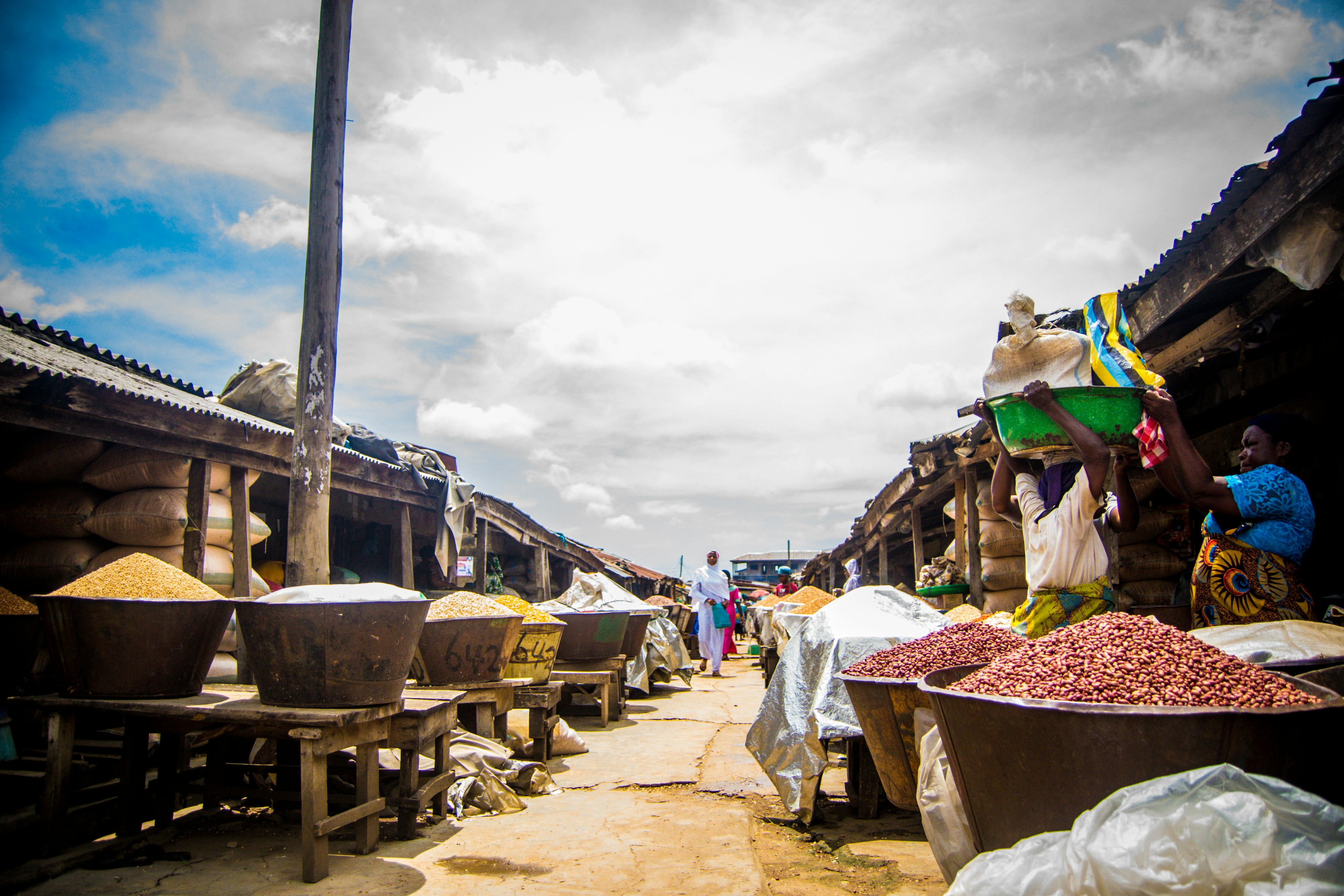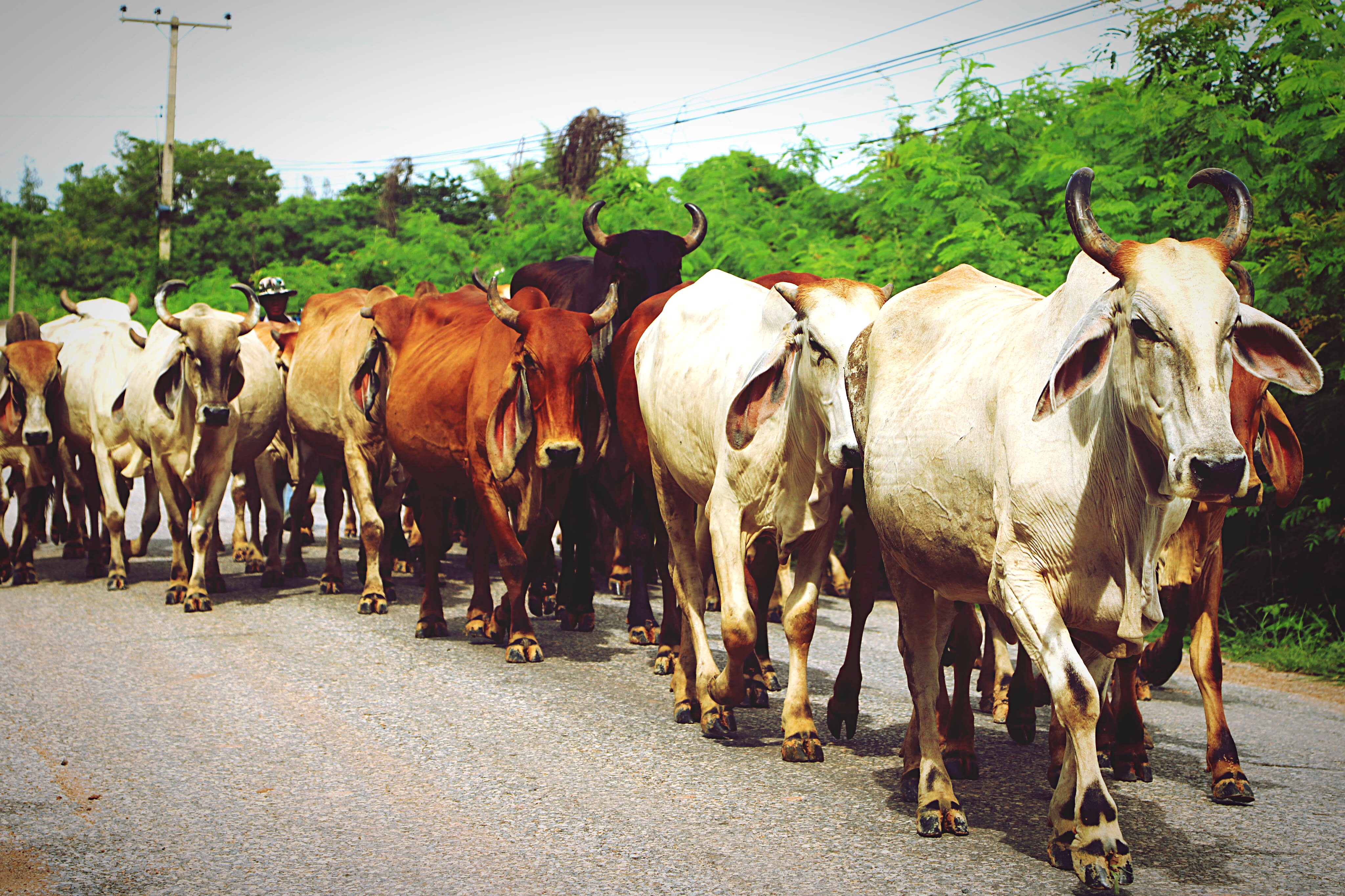Food Inflation in Nigeria
Nigerians face a lot of economic hardship, chief among which is soaring food prices. Recent data from the National Bureau of Statistics (NBS) reveals a food inflation rate of 40.87% in June, the highest in the country's history. This is part of a worrying trend where each monthly release sets a new high, only to be surpassed the following month. The cost of making a pot of Jollof rice, Nigeria's most popular meal, has skyrocketed from ₦12,373 in June 2023 to ₦20,274 in June 2024, a staggering increase of 64%. This drastic price hike is a stark reflection of the country's soaring food inflation rate. With Nigerians already spending over 65% of their income on food, according to the United Nations, this trend is pushing households to the brink. The escalating cost of living and stagnant incomes are forcing families to make difficult choices, among which is adopting strategic food purchasing habits for economic survival in the face of persistent inflationary pressures.
Seasonality in Food Prices
In this article, we discuss a concept that could help individuals make informed decisions about when to buy or sell food: seasonality. In the context of food prices, seasonality refers to recurring patterns in food price fluctuations that tend to repeat annually. Understanding these patterns can help Nigerians identify which months typically see higher price increases and which ones experience slower growth in food prices. To analyse seasonality, we focus on the month-on-month food inflation rate, which indicates the percentage change in food prices from one month to the next. It helps to understand how food prices rise and fall throughout the year, revealing consistent seasonal trends. Understanding the seasonal patterns in food prices could be crucial for consumers and policymakers alike. By identifying months with historically higher or lower inflation rates, strategies can be developed to alleviate the impact of these price fluctuations on the people.
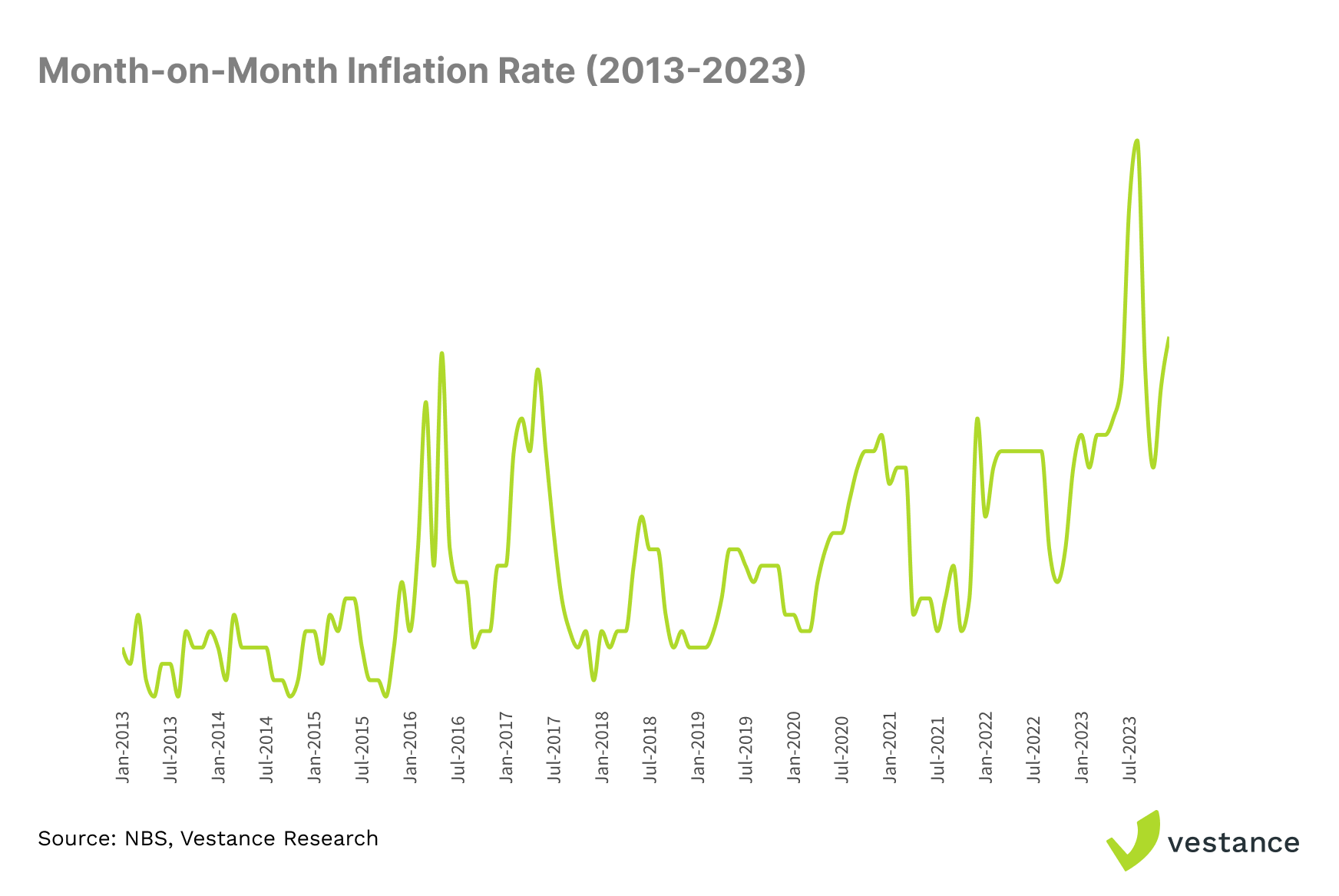
Nigeria’s month-on-month inflation rate data from 2013-2023 shows a distinct pattern of fluctuations in month-on-month food inflation rates in Nigeria. While the overall trend shows rising food inflation over the years, the rate of increase varies significantly across different months. These fluctuations create a cyclical pattern of acceleration and deceleration in food price increases. The fluctuations are influenced by a lot of factors, which include agricultural production cycles (planting and harvest period), consumer preference, festivals, and climate conditions.
To gain a more nuanced understanding of this pattern, we examine how food inflation rates typically rise or fall in each month of the year by examining the median month-on-month food inflation rate recorded in each month between 2013 and 2023.
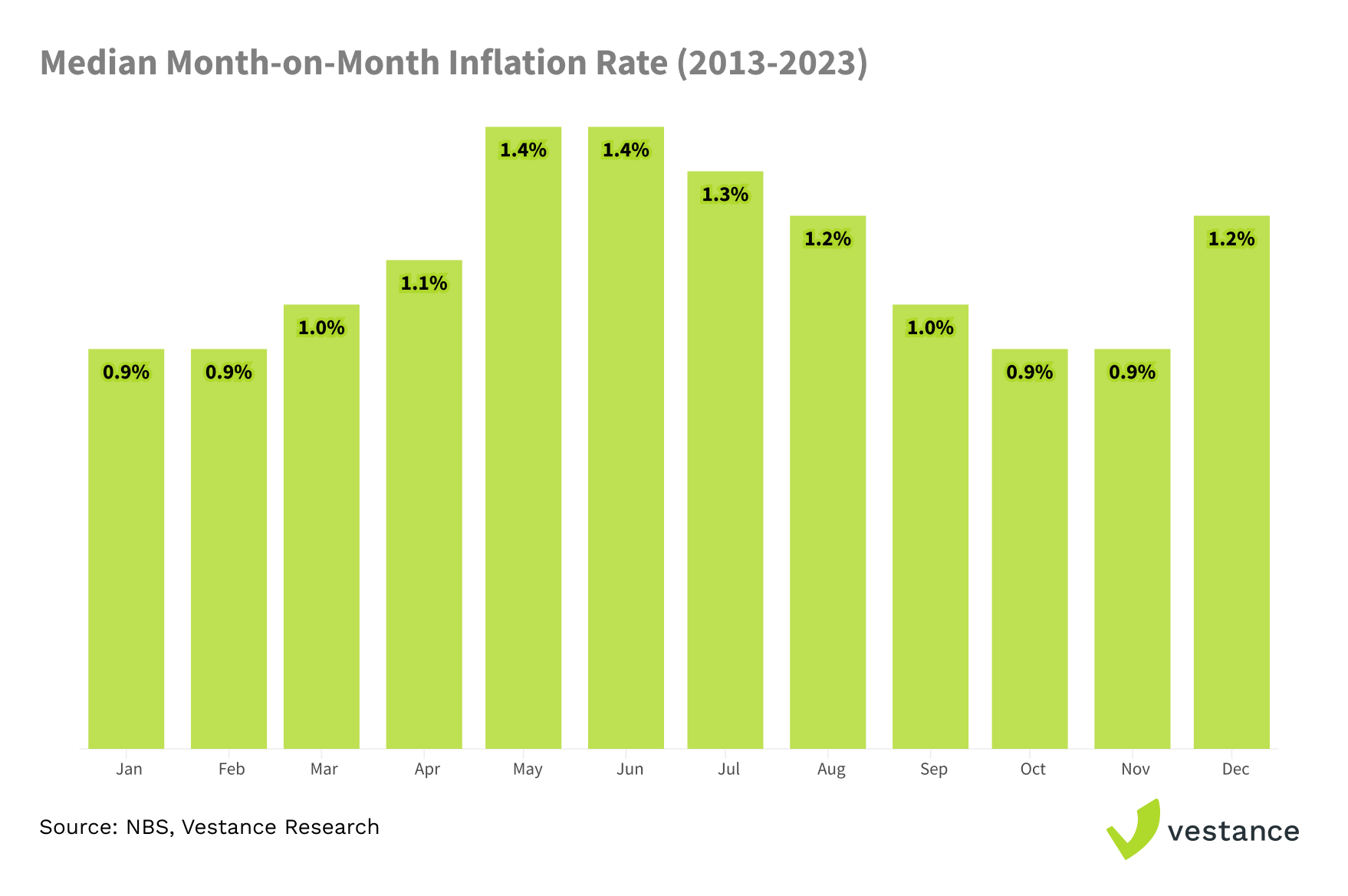
The periods of January and February are characterised by relatively modest increases in food prices (0.9%). This slower rate of inflation can be attributed to the post-harvest abundance from the previous year’s harvest and the lack of major agricultural activities during these months. The month-on-month inflation rate begins to pick up in March with a median of 1.0% and in April with a median jump of 1.1%. This jump signals the beginning of the planting season and the gradual depletion of stored crops from the previous harvest. The month-on-month increase in inflation rate then reaches its zenith in May and June, with both months having a median price jump of 1.4%, coinciding with the peak of planting activities and the lean period when food stocks are at their lowest. July too experiences a high month-on inflation rate (1.3%), although lower than May and June but relatively higher than that of other months.
Following this peak in May and June and the high month-on rate in July (1.3%) and August (1.2%), there's a gradual slowdown in the inflation rate from September onwards (1.0%). In October and November, the rate of increase slows down to levels comparable to the pre-planting stage (0.9%). This slowdown corresponds with the harvest period, during which there's an increase in food supply as new crops flood the markets. The increased food supply stabilises prices and moderates inflation. However, December sees another uptick in food price inflation (1.2%), diverging from the post-harvest trend. This spike is related to the surge in social gatherings and celebrations in December, driving up demand for food items and, consequently, their prices
Recommendation
We recommend taking advantage of periods with lower month-on-month inflation rates, typically observed in January, February, October, and November, to purchase and store seasonal food items. This stockpiling approach could help cushion against the higher inflation rates typically seen from March through September. Similarly, October and November present another opportunity for advantageous buying and storing before the December price spike.
It's important to note that these patterns can vary significantly across different food items, as the seasonality of food prices is largely influenced by the planting and harvest periods of each crop. Therefore, to provide more targeted advice, it would be beneficial to conduct a detailed analysis of staple foods in Nigeria, examining their individual seasonality patterns. We examine the pattern price fluctuations of some staple food items in Nigeria, and the guide below show the periods when it is best to buy them and periods marked with high prices.
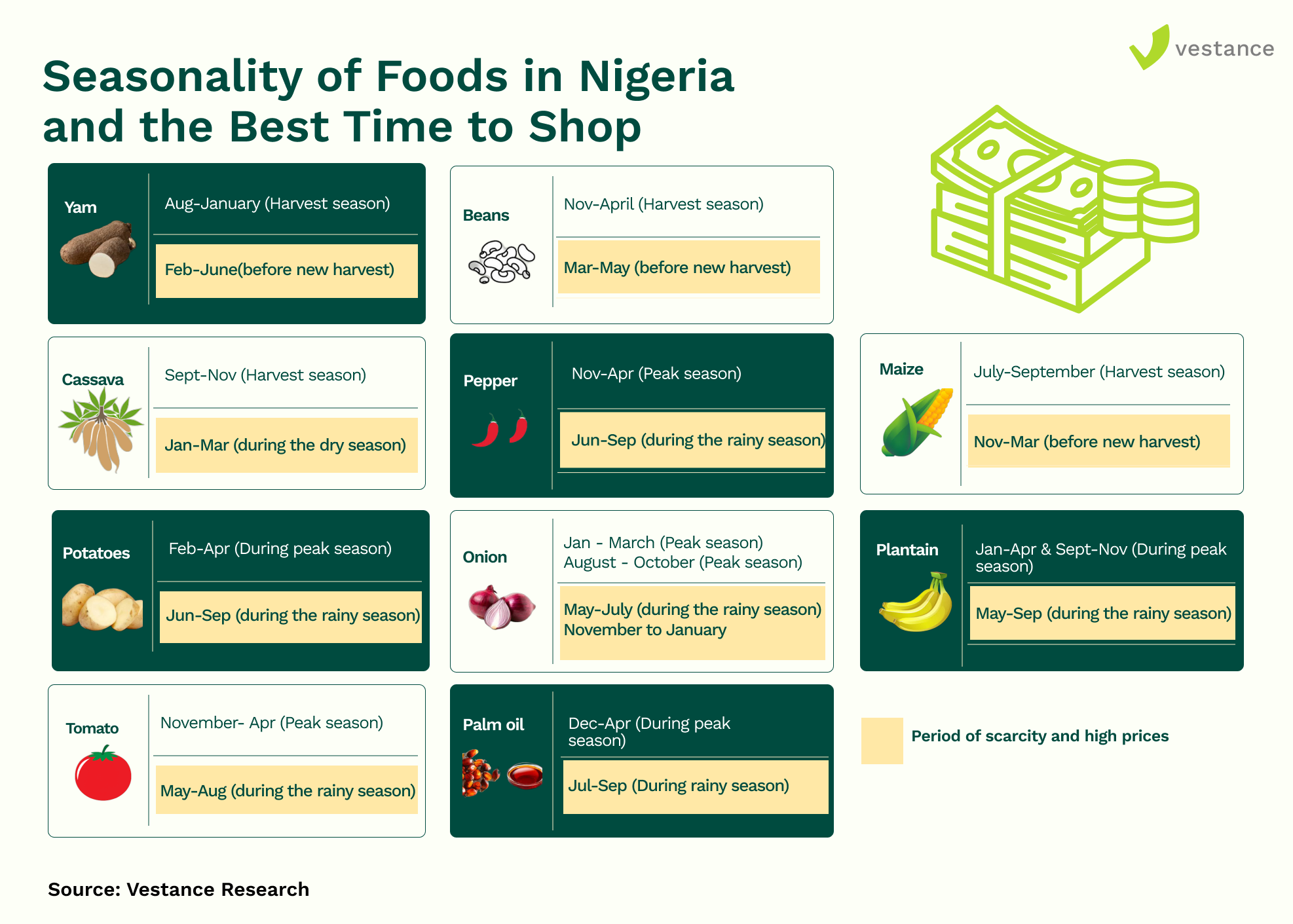
Understanding the unique price fluctuations of these different staples helps Nigerians develop a cost-saving approach to tackling rising food inflation.
It is also important to note that although agricultural production cycles play a major role in fluctuating food prices, they are not the only determinants. Other factors that can affect price fluctuations include consumer preferences, weather, government policy, and transportation costs. Therefore, individuals should be cautious in how they make use of the information on price seasonality and be informed about wider economic developments and policy changes that may affect food prices.
About Vestance
At Vestance, our mission is to be the foremost catalyst of sustainable agriculural transformation in Africa by empowering agri-businesses and governments with high-quality and data-driven insights, knowledge, innovation, and resources.
